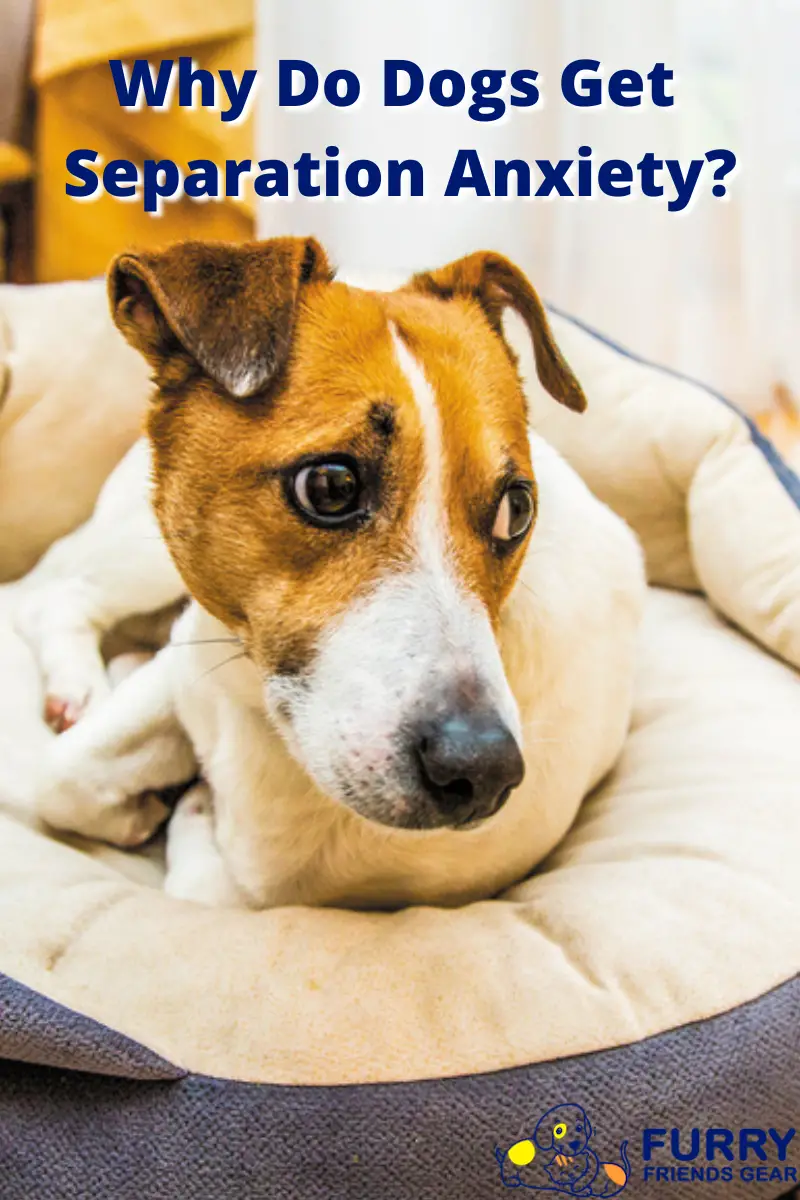Messy house, furniture chewed on, puddles of pee everywhere, scratches on the floor, bite marks on the window sills, a noted complaint from the neighbor – these are among the many scenarios most dog owners come home to after their 9-5 job. The suspect? No one else but their adorable and loving dog. These are all behaviors of separation anxiety. But why do dogs get separation anxiety?
Things like this can be very frustrating and stressful, especially if it happens every day. But as much as it’s stressing you out, what you may not know is that it’s stressing your dog a couple of times more.
The scenarios mentioned above are commonly seen in dogs with separation anxiety. This is when a dog starts to get stressed or panicked every time he’s left alone. Just one person can sometimes trigger it, and that person is someone he’s hyper-attached to.
Cases of this can range from mild to severe, and if not taken care of, it can reach dangerous levels. And there’s actually no clear explanation as to why dogs experience this other than the fact that the fear of being alone triggers it.
Below we enumerate some of the most common causes why your dog might have separation anxiety. We’ll also share what other symptoms to watch out for and how you can treat a dog with anxiety.
Related article: Best Dog Toys for Separation Anxiety
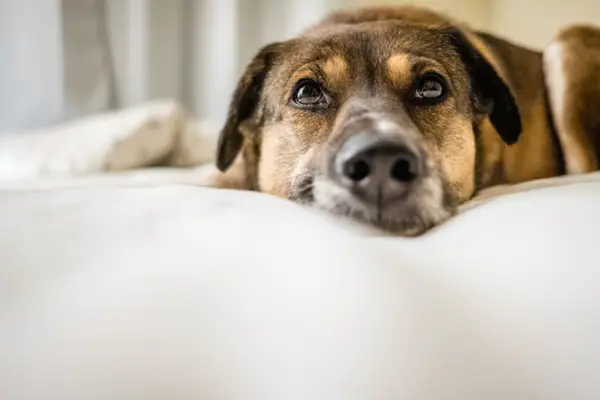
Why Do Dogs Get Separation Anxiety? Some Common Causes
Being Left Alone
As the name implies, being left alone is one of the most common triggers of separation anxiety in dogs.
We are all aware of how much our dogs love bonding with us. They are dependent on us and most definitely love spending the whole day with us. Because of this, they’ll surely get lonely when left alone, or worse, they might even get stressed out. Does this leave you wondering why do dogs get separation anxiety?
Sometimes, this happens when your dog is left alone for the first time. However, they don’t recover from that. So, the next time you go, they get stressed out even more, especially if you leave them for long hours.
Even if you leave your dog with other people at home, it won’t help if your dog is very attached.
Traumatic event
Another answer to “Why do dogs get separation anxiety?” is a traumatic event. This refers to abandonment, bad experiences at the shelter, staying in a kennel for too long, poor living conditions in their past home, etc.
As much as dogs are loving creatures, not all people are very kind. They sometimes find these animals like objects that they will play with until they get tired of them and throw them away. Some people don’t even consider them as part of the family and treat them like garbage.
Because of these events, dogs develop trauma and become extremely fearful. As they start to experience love from you, seeing you leave them will make them recall those feelings and gets them so stressed out because you might not come back.
New Caretaker
There are also positive changes that can still trigger separation anxiety. One of those is when your dog gets a new caretaker. But why do dogs get separation anxiety over a new caretaker?
As mentioned earlier, dogs form bonds with their owners. So, having a new caretaker will make them question these changes. It will also cause them to be stressed and will give them that feeling of abandonment.
This is very common with dogs being left at a shelter or being given to a friend because their owners can no longer care for them.
Related article: How Do You Help A Dog With Separation Anxiety?
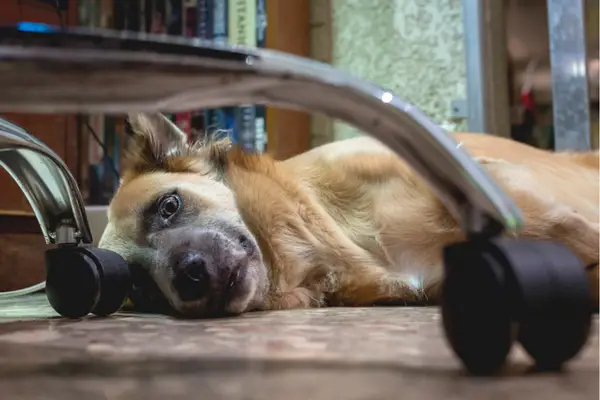
Change in Routine
Why do dogs get separation anxiety with a change in routine?
Let’s say you’ve scheduled playtime with your dog from 7 o’clock to 8 a.m. every day. Your dog is already used to this kind of routine and is always looking forward to it. So, if it happens that you need to run an errand in this time schedule, your dog will get confused, and he’ll get stressed out, wondering why you’re not with him.
Another example is when you always allow your dog to sleep with you when he was a puppy. And when he grew older, he was suddenly not allowed to sleep with you. So again, this makes them feel sad, and it will make them wonder why you’re no longer with them during the night.
Moving into Another Home
Moving to a new residence can also trigger your dog’s separation anxiety, mainly because it’s such a significant change. Everything around him is so different and unfamiliar that he’ll be having a hard time adjusting.
As a dog owner, you must make your dog feel like he’s still at his old home. Bring some items he’s familiar with and keep the scent the same. At the same time, follow the same routine and don’t leave him alone too often yet.
Changes in the Members of The Household
Your dog can also get separation anxiety even when it’s just because there have been changes in the household members. It could be you’re welcoming a new baby, someone is leaving for college, or someone close to your dog (a human or a pet) just died.
Related article: How Do You Stop Separation Anxiety in Dogs?
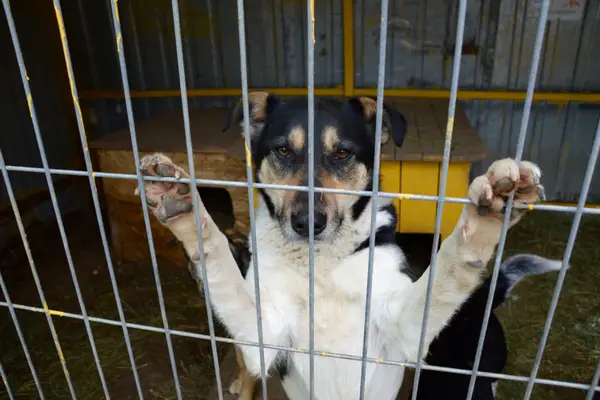
Symptoms to Watch Out For
In order to answer “Why do dogs get separation anxiety?”, you need to think of some symptoms to look out for. Separation anxiety can be triggered by even the smallest change in your dog’s environment. Symptoms may vary from one dog to another and will also depend on the severity of the anxiety. Here are some of the most common symptoms we can usually:
- Urinating and defecating around the house
- Excessive barking, howling or crying
- Chewing on household items, biting window sills, destroying furniture, and other destructive behaviors
- Trying to escape
- Pacing back and forth or going in circles
- Excessive salivation and panting
The only problem is, that even if you have observed these behaviors in your dog, you can’t conclude immediately that it’s separation anxiety. There are other possible reasons why your dog shows these symptoms, such as a medical condition, boredom, or general anxiety.
So, how do you know if your dog really does have separation anxiety?
It’s recommended to install a pet monitoring system. You should have one installed in areas where your dog usually is whenever you leave. It’s also best to get a camera with a wide angle to capture a wider space. This way, you can observe your dog’s behavior when you’re not at home.
Generally, you would need to watch for:
- How long did it take before your dog exhibited separation anxiety when you left?
- What symptoms is your dog showing? How long are they exhibiting those symptoms?
- Is your dog focusing his behavior on one area, e.g., nonstop staring at the window, destroying the couch, scratching the floor on the doorway?
- Are the behaviors he’s showing only manifest whenever you leave?
Do this for a couple more days and take note of every observation. The answers to these questions will not only determine if your dog does have separation anxiety; it will also help determine the severity of your dog’s case.
On your next dog check-up, show these notes to your vet so he can tell you if your dog really does have separation anxiety. He can also give you better advice on how you can best handle your dog’s separation anxiety.
How To Treat A Dog With Separation Anxiety
Separation anxiety will vary from one dog to another. How to handle it will depend on the severity of the case. However, there are some common ways most dog owners practice whenever to help their dogs cope with this problem. Here are some of those:
Teach Your Dog To Become Independent
There are three ways to go about this:
Build your dog’s tolerance for alone time
Take your dog inside a room. Pet him and talk to him gently but don’t mention anything about leaving. So don’t say any goodbyes or give a hug that will throw that hint.
After that, gently leave and close the door behind. If this is the first time you do this, you really have to expect that your dog will cry. Observe how long it would take before he cries; when he does, don’t go back immediately.
Wait for about 5 minutes, or it depends on how long you’d want to keep your distance on the first day before going back to the room. If your dog has a severe case, it’s advisable not to take more than a minute.
Do this every day, once only, and gradually increase the time once your dog starts to build some tolerance to a specific time you’ve set. It would also help if you leave some toys and treats to entertain him and probably remove some household items that he can destroy.
Don’t let your dog follow you around when you’re at home.
Dogs that have separation anxiety tend to follow your around whenever you’re home. This is cute but shouldn’t be tolerated. So, every time your dog tries to follow you around, teach him to “stay.”
Carefully turn around when you feel he’s following and give him a firm command. And of course, give your dog a tasty treat if he obeys.
Create a personal space for him.
Lastly, you need to create his personal space. You can indicate some no-dog zone areas in the house and block those areas with a baby gate. Don’t let your dog sleep with you, too, and give him a bed of his own.
You can place some treat-dispensing toys around the house, too, so your dog learns to feed by himself. This way, he knows that even if you’re not around, he gets to eat, drink, and play.
By teaching your dog to become independent, you lower their chances to get separation anxiety. At the same time, it gives you time to relax and chill while being in the comforts of your home. Plus, your neighbors can rest, too, without those barking and howling whenever you’re not at home.
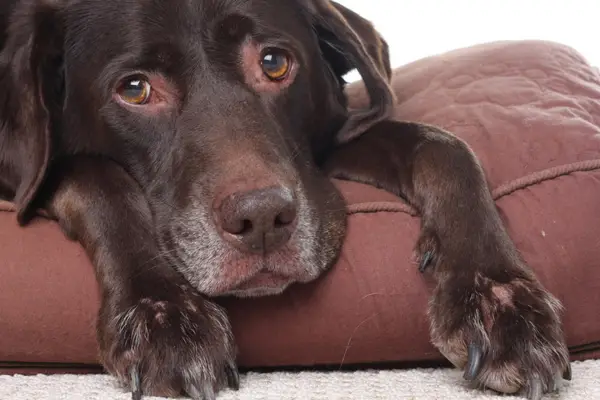
Change Your Going-Away Signals
The next thing you can do is change your going-away signals.
Dogs have an excellent memory, and they notice everything you do, including the routine you have whenever you leave. He knows that the last thing you pick up before you leave is your car key or that you only wear a coat when going somewhere.
Regardless of what these actions are, your dog knows them and immediately associates them with leaving. This then causes them to panic, knowing that they’ll be alone again for several hours.
So, you must start to disassociate these actions from your leaving. Try picking up your car key on the weekend and sitting on the couch. Wear your coat, get to bed, and read a book. Go out the front door, sit on the patio, and go back.
This way, your dog will not panic whenever he sees you pick up your key or wear your coat. If you leave, put some distractions and make sure to leave some things that will entertain him.
Be Calm When Arriving or Leaving Your Dog
One of the mistakes we make, as dog owners, is that we tend to overreact whenever we say goodbye or say hello to our pets. Yes, we can consider this normal because it’s really sad to leave your dog behind, and we’re also excited to see them again.
However, what we don’t know is that it brings some sort of negative emotion to our dogs. It makes them think that they won’t be safe because you’re afraid about leaving them. The same thing if you arrive home to an overly excited dog as it only intensifies their emotion.
So, stay calm when saying your goodbyes and hellos. You don’t even have to say goodbye, and when you arrive, don’t pet your dog immediately when he’s overexcited. Make sure he calms down first before you start petting him and giving him a treat so as not to encourage the behavior.
Take Your Dog Out For Exercise
One trick you can also do is to tire your dog out. You know what they say, a tired dog is a calm dog.
So, take your dog for a walk or exercise daily. Let them expel all the excess energy they have so that they’ll focus more on eating and napping when they get home. It’s some sort of distraction, so your dog won’t worry about you leaving.
Just make sure to leave something entertaining behind that they can focus on for hours.
Feed Your Dog Before Leaving
Just like with exercise, food will make your dog feel relaxed and satisfied even if you leave him. And as we mentioned above, get some treat dispensers or hide some treats around the house for your dog to find. This will not only keep your dog full, but it will make him busy for hours.
Leave Some Toys
Aside from treats, leave some toys around that your dog loves. Or you can also buy some behavioral toys that aim to help dogs with separation anxiety.
There are several types of behavioral toys. There are some toys for snuggling, puzzle toys, food toys, and more. You should know what your dog’s needs are that you need to address before buying a behavioral toy. This way, the toy will serve its purpose.
Seek Professional Help
Lastly, but definitely not least, seek professional help.
We’ve already mentioned this earlier, but it’s nice to put great emphasis on it. You can either go to the vet or a professional dog trainer for some advice regarding your dog’s behavior. They’ll be able to put in some great insights as to what your dog needs. As for vets, they can even prescribe calming aids in case your dog needs one.
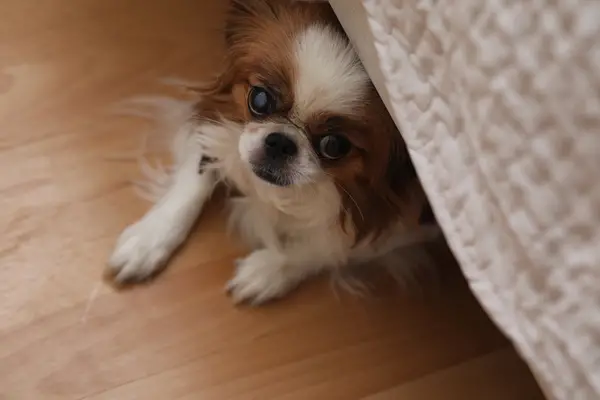
Conclusion
We hope this article helped answer “Why do dogs get separation anxiety?” for you! Separation anxiety does not only cause stress in dogs but also in owners and neighbors. So, it’s definitely not something you should take lightly. If not taken care of, it can reach dangerous levels that some dog owners just result in taking their dogs to the shelter because they get tired of taking care of them anymore.
This is such a sad occurrence that no dog should experience. So, know why your dog has one and help them cope with that. Don’t hesitate to reach out for professional help to better take care of the situation.

